North Bali’s mainstay are its rolling green hills and the authentic and traditional Balinese villages dotted across the region. Gaze upon the hills stippled with flowers and the picturesque rice fields while the local village children greet you with genuine smiles and warmth.
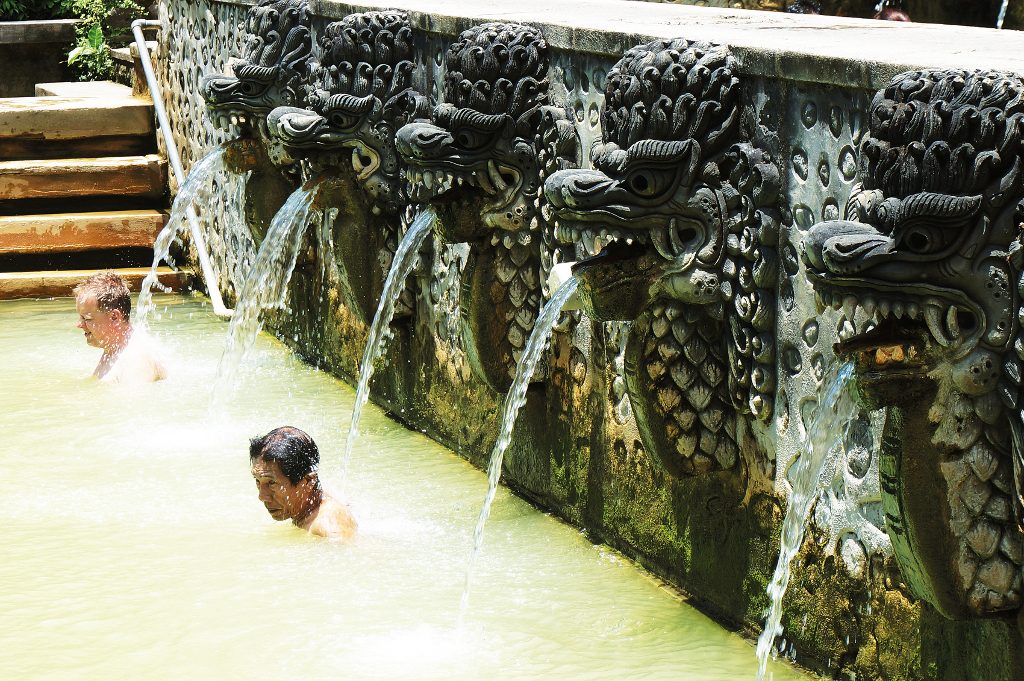
I find it rather odd to learn that a place as beautiful as North Bali still hasn’t received the number of visitors it truly deserves, despite the tourism boom Bali experiences. The area is a welcome departure from the mass tourism of the south as it has preserved the traditional Balinese culture and spirit that made the Island of the Gods popular in the first place.
The Climate is very temperate in this part of Bali. The mountains and the volcanoes to the south protect the northern portion of the island from frequent rainfall, and contribute to a drier climate and lesser humidity. When it rains, it is usually in the afternoon or early evening for about 1 to 2 hours; it is seldom that it rains for an entire day. Therefore, it is definitely possible to visit Bali during the rainy season. In fact, many prefer the rainy season due to the lushness of the vegetation and the decreased intensity of the sun.
North Bali has unique places of interest that you won’t find down south. The Banjar Hot Spring, located in the middle of the jungle in the Banjar sub district, is a wonderful place to relax, where you can bathe within a natural, tropical setting. Upon entering the hot spring, you’ll come across a bridge surrounded by landscapes full of colourful plants and flowers. From here, a glimpse of the bathing areas is enough to entice you to take a dip.
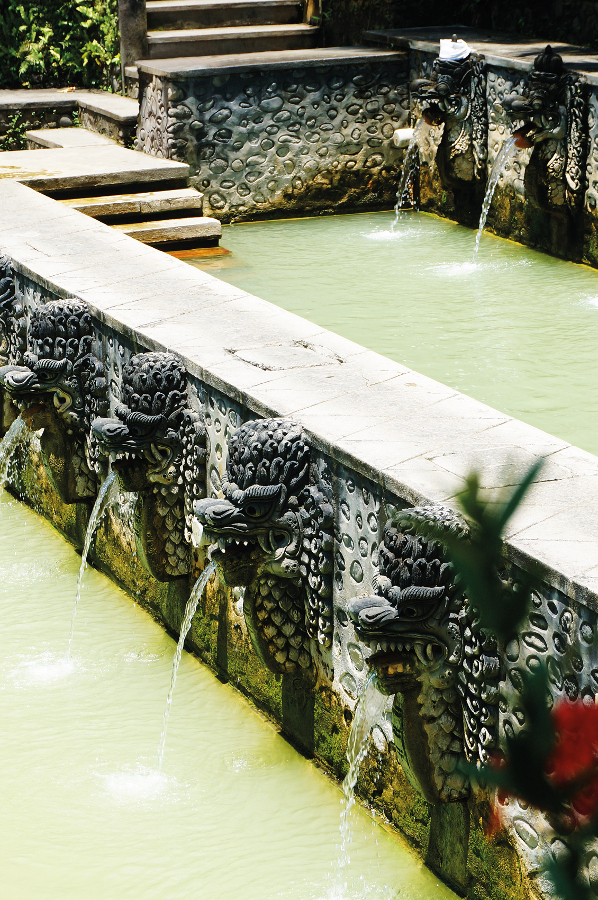
The first bathing area consists of a two-tier pool flanked with dragon statues spewing out hot spring water. The upper pool is shallower and seems to be slightly warmer than the lower one. Along the edges of the two pools are ledges where you can sit while in the water. Be careful when climbing down the stairs as the water is not clear and the steps can be slippery. During my visit, I was dozing off in the hot water when I was awakened by a huge splash; someone had slipped down the steps and stumbled into the pool.
The other bathing area, with a smaller pool yet stronger water jets, allows you to better enjoy the warm water. The water cascades from a three-metre high fountain, giving you a great scalp and back massage.
The restaurant within the premises serves decent food, so you can spend a good portion of the day lazing in the hot spring water and grab a bite to eat anytime. Changing cabins and showers are provided just below the restaurant. There’s also an area with open-air showers right next to the biggest pool, where you can clean up under the canopy of flowered branches. To enhance the relaxation, you can head up to the jacuzzi pool and spa; just follow the signage as you pass the changing area.
Another nearby attraction in Banjar is Brahmavihara-Arama Buddhist Monastery, a hidden gem that really justifies the long drive to North Bali. Located some 2km from the hot springs, the Buddhist monastery is a coruscation of colour. Its roof is bright orange, and Balinese statues and carvings are found throughout, showing the solidarity of the relationship between the Hindu and the Buddhist communities that live in the area, and Bali in general.
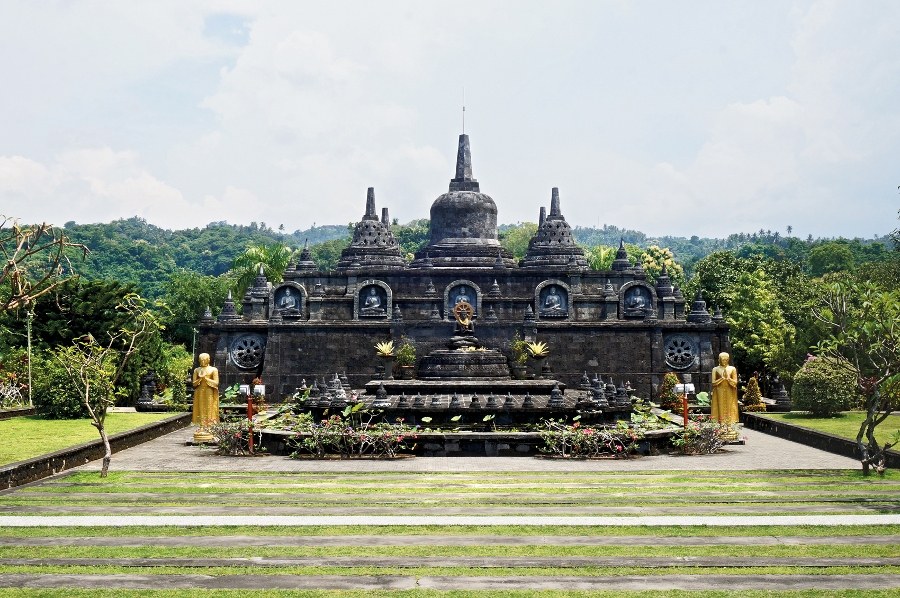
The biggest Buddhist monastery in Bali, Brahmavihara-Arama was built in 1970 with numerous meditation rooms, libraries, beautiful gardens, and an impressive mini replica of the world’s largest Buddhist archaeological site, Borobudur on its highest ground. Several main sections include the Uposatha Gara, which is a restful and quiet meditation room in the western section, with walls depicting Prince Siddhartha Gautama’s birth, and a statue of the Buddha in his state of reaching Nirvana. The room also serves as a main venue for new bikhu or Buddhist monk initiations.
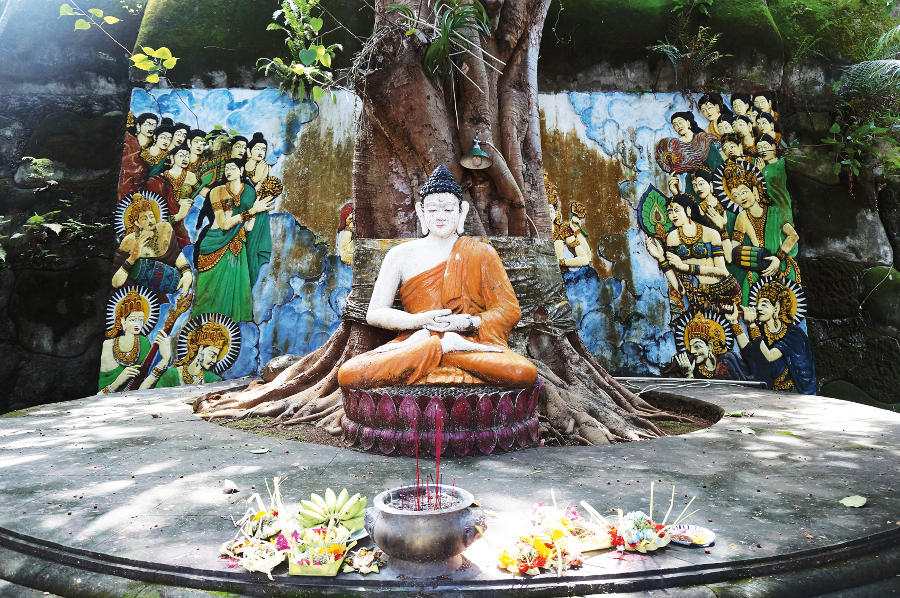
Manicured flower gardens, towering pine trees, and its high altitude all add up to a sense of peace you can enjoy here. Each day, lots of visitors frequent the monastery; some to mediate, others simply to admire the beautiful buildings, the pagoda, the statues of Buddha, and the beautiful landscape and surroundings. The monastery is very peaceful and has panoramic views overlooking the vast ocean. Visitors are always welcomed but are asked to respect the sacredness of the area and the beliefs of the locals by wearing a sarong or sash upon entering the monastery.
Going through the small village roads from the hot spring to the monastery, you’ll catch a glimpse of Bali as it is told by the early visitors to the island. There may be a chance that you’ll encounter a rush from a traditional ceremony where the sounds of gamelan music fills the air. You’ll find children playing and running around in the open field (some still in their school uniforms) and people walking on the roadsides nodding their heads to the direction of your car as you pass through their area.
Anyway, going down to the Jalan Raya Seririt-Singaraja main road, Lovina is only 10km away to the east. The beach in Lovina spans approximately 2km and it encompasses several small costal villages with Kalibukbuk village as its main focal point. The Lovina beach is a great escape from the bustling, popular beaches found in South Bali such as Kuta, Legian, and Seminyak that are often, if not always, crowded. The waves here are calmer, providing a perfect spot for a swim.
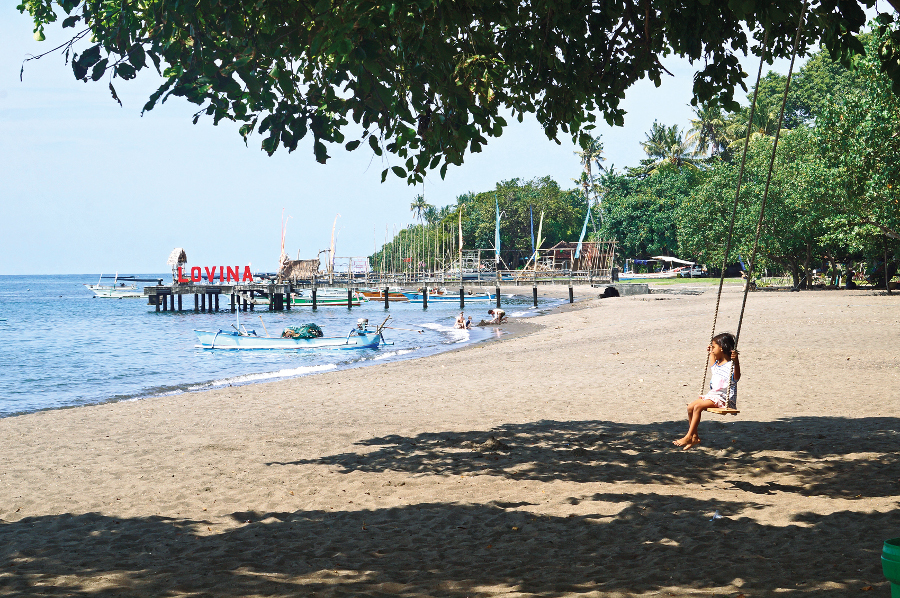
Entering the beach area, to where the dolphin statue is, you’ll pass a row of restaurants serving international food, along with hotels dotting the area. On the beach area, you’ll find further rows of art shops and small warung stalls offering snacks and refreshments. Sunsets are also quite the highlight here, with a rather subdued nightlife after dusk. Though restaurants and accommodations are aplenty, Lovina is still far from busy especially if compared to the areas in South Bali. That said, with its quiet atmosphere and serene surrounds, Lovina is an ideal getaway seeking to escape from the hustle and bustle of the island’s popular tourist hubs.
Moving east from Lovina, you’ll encounter Singaraja, the former capital of Bali and the centre of the island’s trade. The Dutch colonial past of Singaraja is still present, made apparent by the architecture of many of its buildings, especially those that are located in the old harbour district. White plastered warehouses still breath the atmosphere of the old days when the harbour was still busy and trade in spices, vanilla and tobacco flourished.
Singaraja is an attractive town, thanks to a lingering colonial ‘feel’ and some well-preserved colonial architecture. Mainly in the southern part of the town one will find tiny, winding backstreets which make for a pleasant walk. And since it was a trade centre, with a harbour welcoming traders from East Asia and the Far East, cultures have intertwined here. The Chinese influence is very obviously seen; from the food, custom, and religion, traders from the Bamboo Curtain left their marks here.
Nestled by the coast of Singaraja, in an area that used to be a busy seaport during the Dutch colonial era, is the old Chinese temple Ling Gwan Kiong. Referred by the locals as “klenteng”, this temple was built in 1873, upholding the Tri Dharma, the philosophy that blends Confucianism, Taoism and Buddhism, and a slight assimilation with the Balinese culture in terms of how the offerings are made.
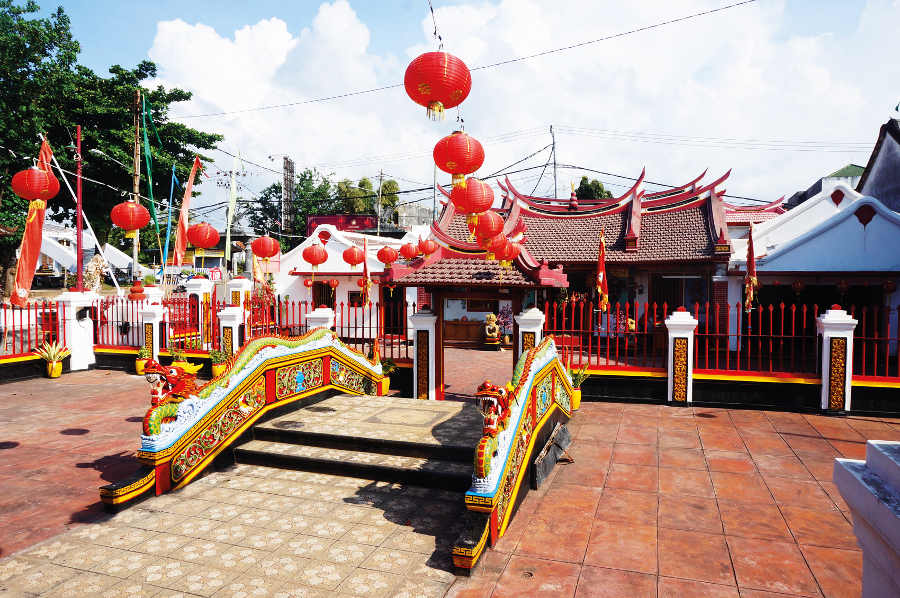
Ling Gwan Kiong is dedicated to Tan Hu Cin Jin, a holy man who is believed to have achieved moksha, the greatest afterlife achievement that liberates one from the cycle of birth and death. Known as samsara, the cycle is only experienced by those who practised the yogas, a series of worshipping that involves four elements: Karma Yoga (working for the Supreme), Jnana Yoga (acknowledging the Supreme), Raja Yoga (meditating to get closer to the Supreme), and Bhakti Yoga (serving the Supreme).
The temple stands out with its authentic Chinese architecture. The construction of bright red, yellow, and green colours against white walls is a beauty to behold in the old shopping district of Singaraja. Inside the temple, the walls are covered with old paintings from the 1650s that tell the story of the Chinese tale of the Three Kingdoms called San Guo Yan Yi, or known in Indonesia as “Sam Kok”. The tale, written by Lio Guanzhong, is about an era when China was ruled by three warlords after the fall of the Zhuo dynasty. The paintings are annually restored by the descendants of the painters.
While the paintings capture the conditions of that particular era, namely the conflicts between various warlords, the writing reflects Confucian teachings: The loyalty to one’s family, friends, and superiors is an important measure of a person’s virtue. From the literature of San Guo Yan Yi, we can also learn about how the religions in China first came to be.
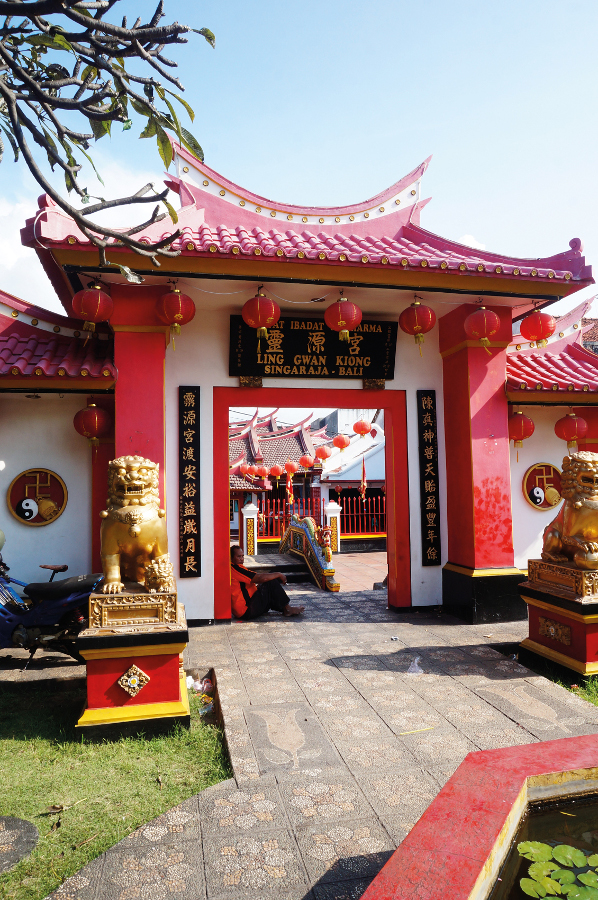
The temple is frequented by those practicing the ancient Chinese religion. With that being said, Ling Gwan Kiong also welcomes people of all religious backgrounds for a visit and/or praying session. The temple caretaker is on standby most of the time. He said many practicing other religions have also come to the temple to enquire their future to Tan Hu Cen Jin – the ancestor the temple is dedicated to. The caretaker will assist those who come to make prayers regardless of their religions. He will organise the offerings and guide you through the prayers step by step.
WHAT TO DO IN NORTH BALI
With the exception of party goers, just about anyone will find that North Bali is a great place for an escape. You can go on a sunrise dolphin viewing trip to observe dozens of dolphins gathering just offshore of Lovina at sunrise. The trip is one of North Bali’s major attractions; if you’re there you should definitely go. The dolphins will be there most of the time, however, to avoid disappointment it’s best to organise a dolphin trip through your hotel or resort rather than rely on guesswork.
Adrenaline junkies will also find North Bali a challenging, fun playground. Home to a number of famous waterfalls on the island, North Bali makes a great place for adventure in nature. Thrill seekers will love Gitgit Waterfalls. Exploring Gitgit with Adventure and Spirit allows you to walk, climb, jump, and swim Gitgit in a safe way. You’ll be instructed on the various styles to walk down the various canyons that you’ll encounter. You’ll learn the basics of the activity such as ICOpro organization and technical skills required for a descent with an instructor, vertical descent and move on rope, independent rappel, jumps, waterslides and swims in calm water.
Adventure and Spirit
Address : Jalan Raya Mas, Ubud
Phone : +62 853 3388 5598
Website : www.adventureandspirit.com
SLEEP IN NORTH BALI
A day trip to North Bali is very doable. However, in you plan to go on the dolphin trip, we advise that you stay overnight. There are plentiful accommodations to choose from, especially in Lovina, but for that ultimate staycation, we recommend The Damai.
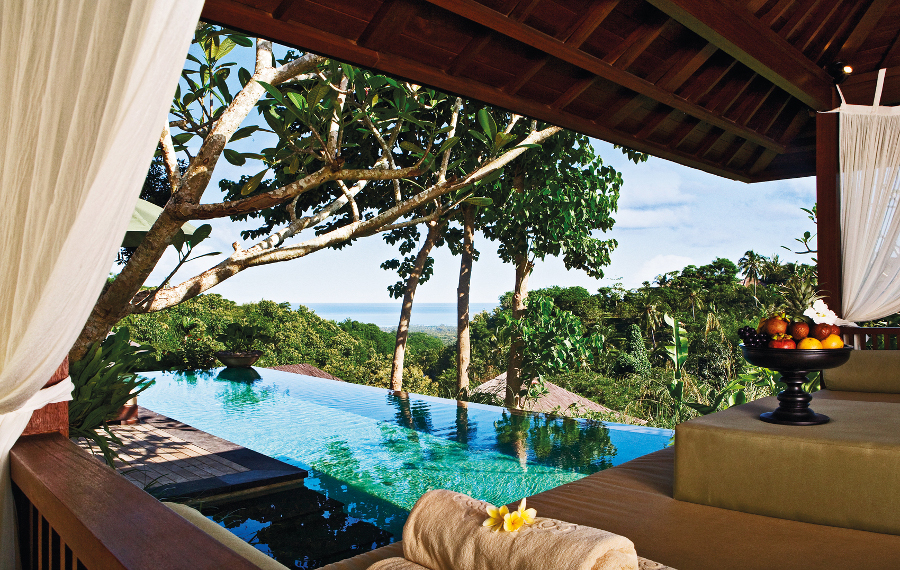
Nestled on the jungle-clad hills of Kayuputih village, on the back of Lovina beach, The Damai offers 15 serviced villas – ranging in size from the intimate to the palatial surrounded by lush gardens. You can choose to stay in the beautifully decorated Garden Villas that offer simplicity and elegance with wonderful open-air bathrooms or at the Pool Villas with their magnificent interiors, expansive spaces and collections of local ethnographic antiques as well as private pools. The award-winning restaurant in Damai allows you to indulge in simple and delicious cuisine based on local ingredients.
The Damai
Address : Jalan Damai, Kayu Putih, Lovina
Phone : +6281 338 437 703
Website : www.thedamai.com






